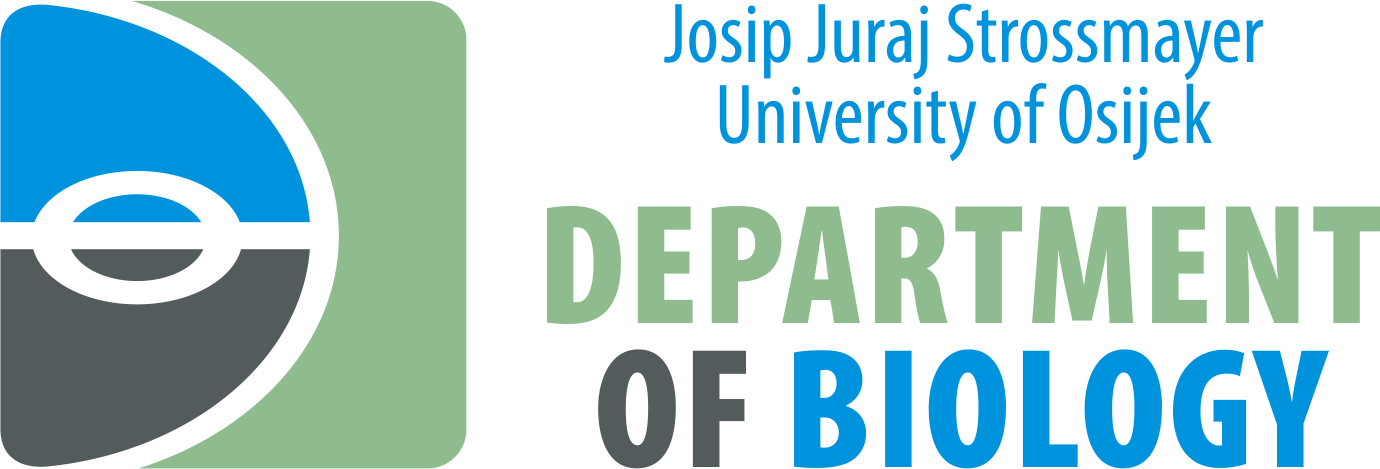Current science projects
Assessment of conservation soil tillage as advanced methods for crop production and prevention of soil degradation
- Source of funding: Croatian Science Foundation
- Duration: 22/12/2020 - 21/12/2024
- Holder/Head: Danijel Jug, Ph.D., associate professor; Faculty of Agrobiotechnical Sciences Osijek
- Status of the Department in the project: associate
- Scientists from the Department of Biology involved in the project: Davorka Hackenberger Kutuzović, Ph.D., associate professor; Olga Jovanović Glavaš, Ph.D., assistant professor
SoilBON - Soil Biodiversiy Observation network
- Duration: 2021. - 2030.
- Holder/Head at the institution: Davorka Hackenberger Kutuzović, Ph.D., associate professor
- Status of the Department in the project: associate
- Scientists from the Department of Biology involved in the project: Davorka Hackenberger Kutuzović, Ph.D., associate professor
SoilBON foodweb: Assessing global drivers and functions of soil animal biodiversity and interactions in soil food webs
- Duration: 2021. - 2030.
- Holder/Head at the institution: Davorka Hackenberger Kutuzović, Ph.D., associate professor
- Status of the Department in the project: associate
- Scientists from the Department of Biology involved in the project: Davorka Hackenberger Kutuzović, Ph.D., associate professor
European Soil-Biology Data Warehouse for Soil Protection (CA18237)
- Source of funding: COST (European Cooperation in Science and Technology
- Duration: 09/09/2019 – 10/09/2023
- Holder/Head at the institution: Davorka Hackenberger Kutuzović, Ph.D., associate professor
- Scientists from the Department of Biology involved in the project: Davorka Hackenberger Kutuzović, Ph.D., associate professor
Arbuscular mycorrhiza potential to modify grapevine defence against viruses (IP-2020-02-8397)
- Source of funding: Croatian Science Foundation
- Total amount of project funding: 129.151,19 €
- Duration: 15/1/2021 – 14/1/2025
- Holder/Head at the institution: Rosemary Vuković, Ph.D., associate professor
- Status of the Department in the project: activity subcontractor
- Scientists from the Department of Biology involved in the project: -
PEsticide RIsk AssessMent for Amphibians and Reptiles (Periamar CA18221)
- Source of funding: COST (European Cooperation in Science and Technology)
- Duration: 06/11/2019 – 05/11/2023
- Scientists from the Department of Biology involved in the project: Branimir Hackenberger Kutuzović, Ph.D., associate professor; Olga Jovanović Glavaš, assistant professor
- Web site: https://periamar.com/
Comparison of the effectiveness of different essential oils and plant extracts as potential repellents against hard ticks (Acari: Ixodidae)
- Source of funding: Foundation of the Croatian Academy of Sciences and Arts
- Total amount of project funding: 729,98 €
- Duration: 09/09/2019 – 10/09/2023
- Holder/Head at the institution: Holder/Head: Stjepan Krčmar, Ph.D., professor
- Status of the Department in the project: project manager
- Scientists from the Department of Biology involved in the project: Mislav Kovačić, Ph.D., assistant professor
Mosquitoes - a vector challenge for public health in North Macedonia and beyond 2021(-1-MK01-KA210-VET-000029937) Erasmus+ program
- Source of funding: ERASMUS+ (EU) North Macedonia, Centre for public health - Skopje
- Total amount of project funding: 7.000.00 €
- Duration: 2023. - 2023.
- Holder/Head at the institution: Mirta Sudarić Bogojević, Ph.D., assistant professor
- Status of the Department in the project: partner
- Scientists from the Department of Biology involved in the project:Mirta Sudarić Bogojević, Ph.D., assistant professor
Characterization of the causal agent of Dutch elm disease in Croatia - diversity and ability to adapt to changes in environmental factors
- Source of funding: Adris Foundation
- Total amount of project funding: 60.000,00 kn/ 7.963,37 €
- Duration: 01/2023.-12/2023.
- Holder/Head at the institution: Zorana Katanić,Ph.D., associate professor
- Status of the Department in the project: project manager
- Leading team member / Researcher: Mirta Sudarić Bogojević, Ph.D., assistant professor
- Team members / Researches involved in project from Department of Biology University of Osijek: Ljiljana Krstin, Ph.D., associate professor, Rosemary Vuković, Ph.D., associate professor, Ivna Štolfa Čamagajevac, Ph.D., associate professor
Restoration of wetland complexes as life supporting systems in the Danube Basin (Restore4Life)
- Source of funding: HORIZON-MISS-2022-OCEAN-01
- Total amount of project funding: 8 300 641,25 €
- Duration: 1.06.2023. – 1.06.2027.
- Leading team member / Researcher: Dr Dubravka Čerba PhD, Assoc. Prof.
- Status of the Department in the project: Beneficiary (Partner)r
- Team members / Researches involved in project from Department of Biology University of Osijek: Dr Alma Mikuška PhD, Assist. Prof., Dr Barbara Vlaičević, PhD, Assist. Prof., Ivana Turković Čakalić, MA
